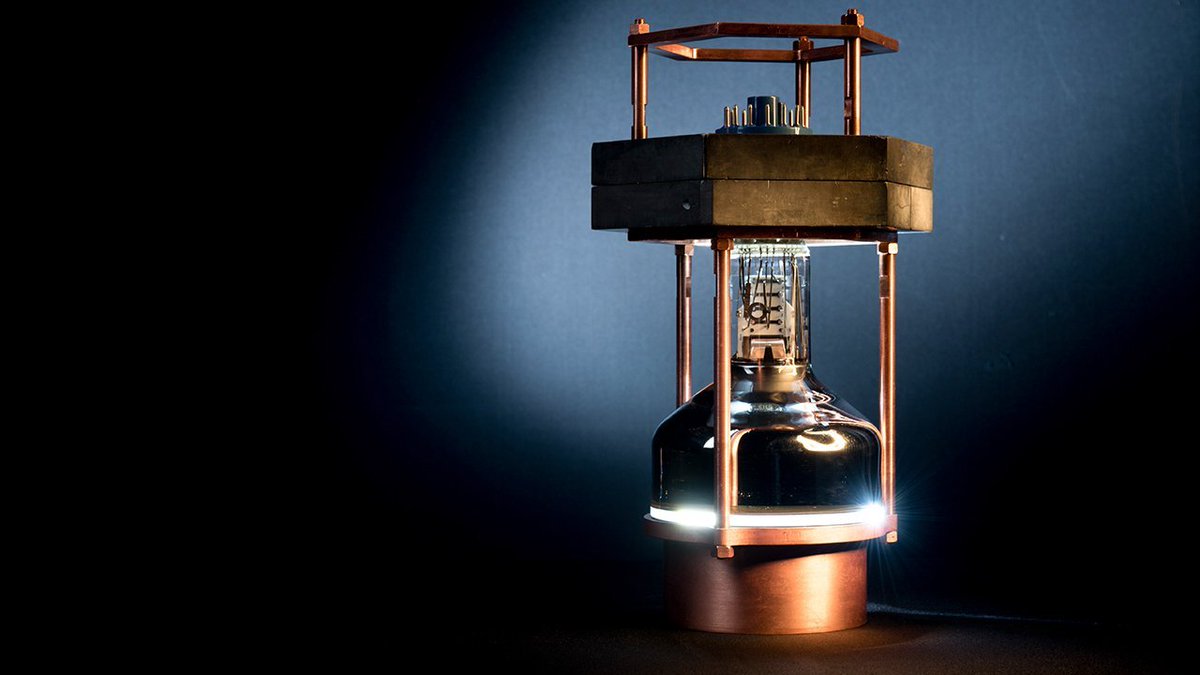The COHERENT experiment, which uses the world’s smallest neutrino detector, has discovered a large fingerprint of the elusive, electrically neutral particles that interact only weakly with matter after more than a year of operation at the Department of Energy’s (DOE) Oak Ridge National Laboratory (ORNL).
The study, conducted at ORNL’s Spallation Neutron Source (SNS) and published in the journal Science, presents solid evidence for a neutrino interaction process predicted 43 years ago but never observed.
ORNL physicist Jason Newby, technical coordinator and one of 11 ORNL participants in COHERENT, a collaboration of 80 researchers from 19 institutions and four countries, said, “The one-of-a-kind particle physics experiment at Oak Ridge National Laboratory was the first to measure coherent scattering of low-energy neutrinos off nuclei.”
The SNS creates a large flux of neutrinos as a consequence of producing neutrons for scientific research. The detector’s placement at SNS, just 65 feet (20 meters) away from the neutrino source, greatly increased the odds of interactions while also allowing the researchers to reduce the detector’s weight to 32 pounds (14.5 kilograms). Most neutrino detectors, on the other hand, weigh thousands of tons: while being regularly exposed to solar, terrestrial, and atmospheric neutrinos, they must be enormous due to the interaction odds being more than 100 times lower than at SNS.
The researchers were the first to identify and analyze neutrino coherent elastic scattering off nuclei. This long-awaited confirmation, predicted in the Standard Model of particle physics, assesses the process precisely enough to place restrictions on alternative theoretical models.
Individual protons or neutrons in a nucleus usually interact with neutrinos. In “coherent” scattering, on the other hand, an incoming neutrino “sees” and interacts with the entire weak charge of the nucleus as a whole.
Newby explained, “The energy of the SNS neutrinos is almost precisely calibrated for this experiment—large enough to give a detectable signal, but tiny enough to take advantage of the coherence requirement.” “A modest quantity of energy supplied to a single nucleus is the only smoking gun of the interaction.”
That signal is as difficult to detect as the slight recoil of a bowling ball when a ping-pong ball strikes it.
The detector employed at SNS, a cesium iodide scintillator crystal doped with sodium to improve the prominence of light signals from neutrino interactions, was designed by physicist Juan Collar of the University of Chicago. He returned to simple inorganic scintillators after experimenting with more advanced technologies. “Having been around for a century, they are undoubtedly the most common type of radiation detector available. “Sodium-doped cesium iodide combines all of the qualities necessary to function as a small, ‘handheld’ coherent neutrino detector,” he explained. “A lot of the time, less is more.”
Finding the correct neutrino detector and source was crucial to success. Collar explained, “The detector was created with SNS in mind.” “Not only is SNS a neutron source, but it is also a neutrino source. It will allow us to embark on many more intriguing missions into neutrino physics.”
Because SNS generates pulsed neutron beams, the neutrinos are similarly pulsed, allowing for easy signal-to-background separation. Data collection is therefore easier than with steady-state neutrino sources like nuclear reactors.
COHERENT detected three neutrino flavors: muon neutrinos that appeared instantly with the neutron beam, muon antineutrinos, and electron neutrinos that appeared a few microseconds later. “The energy and temporal fingerprints we detected are predicted by the Standard Model,” Newby added. “Juan [Collar] needed to make sure he picked a detecting system that had enough timing resolution to tell the difference between the prompt and delayed signals.”
The COHERENT-observed calculable fingerprint of neutrino–nucleus interactions predicted by the Standard Model is not just of interest to theorists. It also controls neutrino dynamics during the generation of neutron stars and supernovae explosions in nature.
“When a large star collapses and eventually explodes, the neutrinos release tremendous amounts of energy into the stellar envelope,” said COHERENT spokesman scientist Kate Scholberg of Duke University. “Knowing the process helps you grasp how these spectacular events happen.”
Coherent elastic scattering is also useful for detecting a supernova’s massive neutrino explosion. “When this happens in the Milky Way, neutrinos of all kinds will collide with nuclei, and sensitive dark matter detectors may see a burst of small recoils,” she said.
“COHERENT’s data will aid in the interpretation of neutrino property measurements made by experiments all across the world,” Scholberg said. “Coherent scattering may also help us better grasp the structure of the nucleus.”
COHERENT researchers will conduct additional measurements with at least three detector technologies to observe coherent neutrino interactions at distinct rates, another signature of the process, despite the fact that the cesium-iodide detector confirmed coherent scattering beyond a shadow of a doubt. These detectors will add to our understanding of basic neutrino features like intrinsic magnetism.
Partners from the Russian Federation (A.I. Alikhanov Institute of National Research Centre “Kurchatov Institute”; National Research Nuclear University Moscow Engineering Physics Institute) and the United States (Indiana University, Triangle Universities Nuclear Laboratory, Duke University, University of Tennessee–Knoxville, North Carolina Central University) were part of the team (Korea Advanced Institute of Science and Technology and Institute for Basic Science).
“Observation of Coherent Elastic Neutrino-Nucleus Scattering” is the title of the Science paper.
The local site studies and installation for the experiment at the SNS were financed by ORNL’s Laboratory Directed Research and Development (LDRD) Program. The detector was built with funding from the National Science Foundation, the Kavli Institute for Cosmological Physics at the University of Chicago, and an endowment from the Kavli Foundation and its creator Fred Kavli.
Additional funding was provided by the DOE Office of Science, which included an award from the office’s Early Career Research Program; the National Nuclear Security Administration’s Office of Defense, Nuclear Nonproliferation Research, and Development; Lawrence Berkeley and Sandia National Laboratories’ LDRD programs; and the Pacific Northwest National Laboratory’s National Consortium for Measurement and Signature Analysis.


